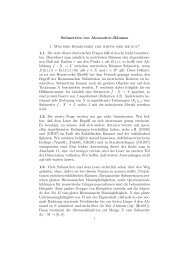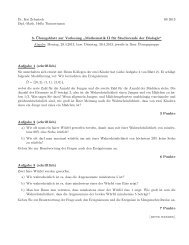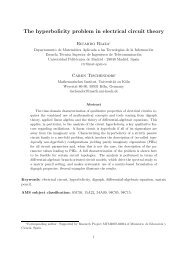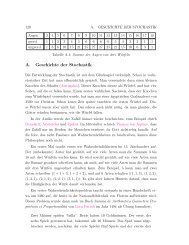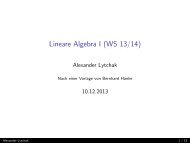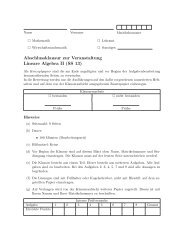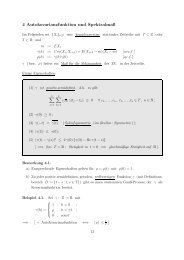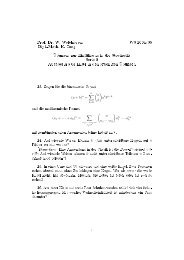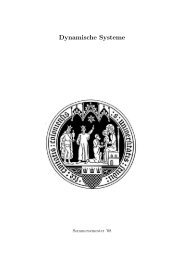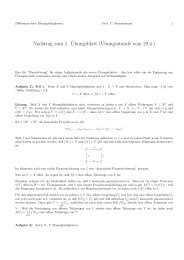Inhaltsverzeichnis - Mathematisches Institut der Universität zu Köln
Inhaltsverzeichnis - Mathematisches Institut der Universität zu Köln
Inhaltsverzeichnis - Mathematisches Institut der Universität zu Köln
Create successful ePaper yourself
Turn your PDF publications into a flip-book with our unique Google optimized e-Paper software.
DMV Tagung 2011 - <strong>Köln</strong>, 19. - 22. September<br />
Barbara Langfeld<br />
Christian-Albrechts-<strong>Universität</strong> <strong>zu</strong> Kiel<br />
Are Planar Lattice-Convex Sets Determined by Their Covariogram?<br />
A finite subset K of Z d is said to be lattice-convex if K is the intersection of Z d with a convex set. The<br />
covariogram gK of K ⊆ Z d is the function associating to each u ∈ Z d the cardinality of K ∩ (K + u). Daurat,<br />
Gérard, and Nivat and independently Gardner, Gronchi, and Zong raised the problem on the reconstruction<br />
of lattice-convex sets K from gK. We provide a partial positive answer to this problem by showing<br />
that for d = 2 and un<strong>der</strong> mild extra assumptions, gK determines K up to translations and reflections. As<br />
a complement to the theorem on reconstruction we also extend the known counterexamples (i.e., planar<br />
lattice-convex sets which are not reconstructible, up to translations and reflections) to an infinite family of<br />
counterexamples.<br />
(This is joint work with Gennadiy Averkov.)<br />
Eva Linke<br />
Otto-von-Guericke-<strong>Universität</strong> Magdeburg<br />
Rational Ehrhart Quasi-Polynomials<br />
Ehrhart’s famous theorem states that the number of integral points in a rational polytope is a quasipolynomial<br />
in the integral dilation factor. We study the case of rational dilation factors. It turns out that<br />
the number of integral points can still be written as a rational quasi-polynomial, that is, a polynomial<br />
function, whose coefficients are themselves periodic functions. Furthermore, the coefficients of this<br />
rational quasi-polynomial are piecewise polynomial functions and related to each other by <strong>der</strong>ivation. In a<br />
special setting, the minimal periods of these coefficients are monotonically decreasing. This is not true in<br />
the integral case, and thus we suspect that the rational quasi-polynomial preserves more of the geometric<br />
structure of a polytope than the integral one.<br />
Tim Netzer<br />
<strong>Universität</strong> Leipzig<br />
Spectrahedra<br />
Spectrahedra are generalizations of polyhedra. They occur naturally as feasible sets, when one passes<br />
from linear programming to semidefinite programming. Spectrahedra form a most interesting class of<br />
sets. Most work on them is quite recent, and there are still many unsolved problems. I will give a short<br />
introduction to the topic, and explain some of the un<strong>der</strong>lying algebra.<br />
141




